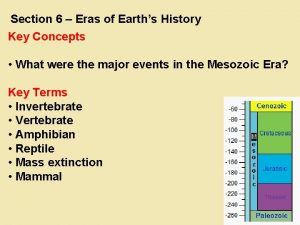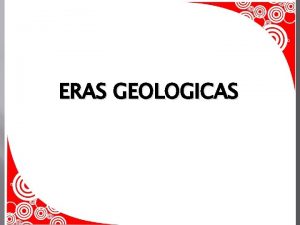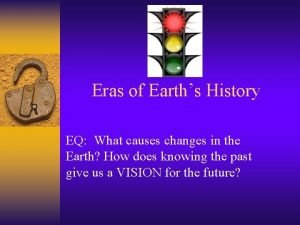Section 6 Eras of Earths History Key Concepts





- Slides: 5

Section 6 – Eras of Earth’s History Key Concepts • What were the major events in the Cenozoic Era? Key Terms • Invertebrate • Vertebrate • Amphibian • Reptile • Mass extinction • Mammal

The Cenozoic Era We talked yesterday about another mass extinction at the end of the Cretaceous Period –where an object from space struck Earth. It wiped out over half of all plant and animal groups and no dinosaurs survived. The extinction of dinosaurs created an opportunity for mammals. During the Cenozoic Era, mammals evolved to live in many different environmentson land, in water, and even in the air. The Cenozoic Era is often called the Age of Mammals. The Tertiary Period During the Tertiary Period, Earth’s climates were generally warm and mild. In the oceans, marine mammals such as whales and dolphins evolved.

On land, flowering plants, insects, and mammals flourished. When grasses evolved, they provided a food source for grazing mammals. These were the ancestors of today’s cattle, deer, sheep, and other grass-eating mammals. The Quaternary Period The mammals that had evolved during the Tertiary Period eventually faced a changing environment. Earth’s climate cooled, causing a series of ice ages during the Quaternary Period. Thick continental glaciers advanced and retreated over parts of Europe and North America. Then about 20, 000 years ago, Earth’s climate began to warm. Over thousands of years, the continental glaciers melted,

except in Greenland Antarctica. In the oceans, algae, coral, mollusks, fish, and mammals thrived. Insects and birds shared the skies. The fossil record suggests that modern humans, or Homo Sapiens, may have evolved as early as 100, 000 years ago. By about 12, 000 to 15, 000 years ago, humans had migrated around the world to every continent except Antarctica. How did Earth’s climate change during the Quaternary Period? The climate cooled causing continental glaciers to advance and retreat over Earth’s surface. Eventually, the climate warmed and glaciers melted.

3 a. What term do scientists apply to the Cenozoic Era? The Age of Mammals b. What conditions allowed so many different kinds of mammals to evolve during the Cenozoic Era? Dinosaurs had become extinct, so this made it easier for mammals to evolve. Also, grasses evolved, which provided a food source for larger, grazing animals.









